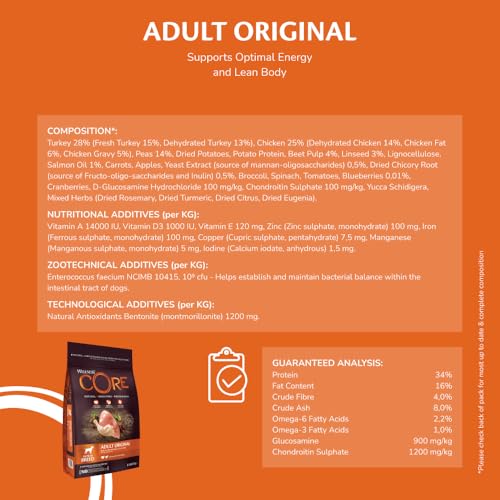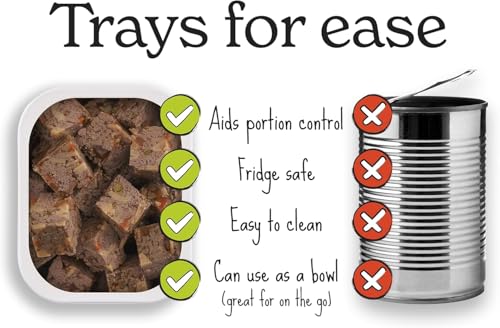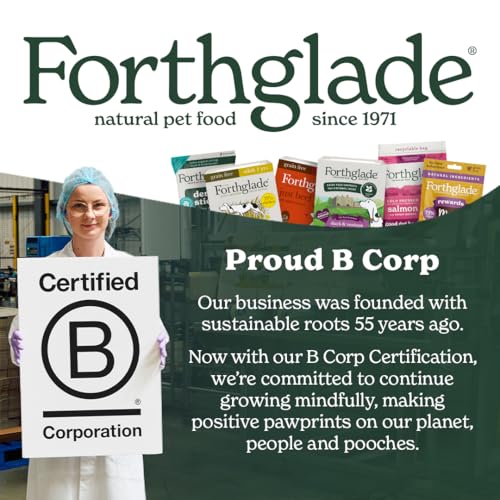




As a dog owner who has recently nursed my beloved pet through a harrowing bout of parvovirus, I understand the immense relief and joy that comes with seeing them on the road to recovery. However, the journey doesn’t end with the virus being defeated. Post-parvo care, especially when it comes to nutrition, is crucial for your dog’s full recovery and long-term health.
During the recovery phase, it’s imperative to provide your dog with a diet that supports their weakened immune system and helps repair the damage caused by the virus. Having gone through this myself, I can share some practical insights and recommendations on the best dog food options after parvo. This article aims to guide you through the choices available, ensuring your furry friend gets the best possible start on their path to regaining full health.
Understanding the specific nutritional needs of a dog recovering from parvo is essential. The virus often leaves dogs with a compromised digestive system, making it difficult for them to process regular dog food. Therefore, selecting the right food that is gentle on their stomach yet rich in essential nutrients is key. In the following sections, I’ll delve into the types of food that worked wonders for my dog, from easily digestible proteins to nutrient-packed supplements.
Understanding Parvo Recovery: What Your Dog Needs
Recovering from Parvo is a challenging journey for both the dog and the owner. Having gone through this with my own dog, I understand how crucial it is to provide the right care post-recovery. Ensuring your dog has the proper nutrition and environment to recuperate fully is essential for their long-term health.
Once your dog has overcome the worst of Parvo, their body is in a fragile state. It’s vital to support their recovery with the appropriate diet, hydration, and gentle care. This stage is all about rebuilding strength and immunity, so every decision you make matters.
Nutritional Needs After Parvo
After surviving Parvo, your dog needs a diet that is easy to digest and packed with nutrients. Protein is a key component to help rebuild muscle mass and repair tissue. Look for high-quality protein sources like boiled chicken or lean beef. Avoid foods with artificial additives and fillers as they can be harsh on the digestive system.
- Hydration: Dehydration is a significant risk after Parvo, so ensure your dog has constant access to fresh water. You might also consider electrolyte solutions specifically designed for dogs.
- Small, Frequent Meals: Instead of feeding large meals, offer small, frequent meals to avoid overwhelming your dog’s stomach.
- Supplements: Probiotics can help restore healthy gut flora, and vitamins like B-complex and C can boost the immune system.
It’s also essential to monitor your dog for any signs of relapse or complications. Keep in close contact with your vet and follow their recommendations diligently. Recovery from Parvo is a gradual process, and with the right care, your dog can regain their health and vitality.
Essential Nutrients for Dogs Recovering from Parvo
After a dog has battled and overcome Parvo, ensuring they receive the right nutrients is critical for their recovery and overall health. The journey to full recovery involves replenishing lost nutrients and strengthening the immune system.
Feeding a dog post-Parvo is not just about giving them food; it’s about providing the correct balance of nutrients to help their bodies heal and regain strength. Here are some key nutrients that are particularly beneficial during this recovery period.
Vital Nutrients for a Speedy Recovery
-
Protein: High-quality protein is crucial for muscle repair and growth. Choose easily digestible proteins such as chicken, turkey, or fish.
-
Electrolytes: Parvo often causes severe dehydration. Replenishing electrolytes like sodium and potassium is essential to restore balance.
-
Vitamins: Vitamins A, B, and C are particularly important. Vitamin A supports the immune system, B vitamins help with energy production, and vitamin C is a powerful antioxidant.
-
Minerals: Zinc and iron play a significant role in recovery. Zinc aids in healing and immune function, while iron is vital for rebuilding red blood cells.
-
Probiotics: A healthy gut flora is vital for digestion and immune support. Probiotics can help restore the natural balance of bacteria in the gut.
By ensuring that your dog receives these essential nutrients, you can help them regain their strength and vitality more quickly. Consulting with your veterinarian can also provide tailored recommendations for your dog’s specific needs during their recovery from Parvo.
Recommended Brands: Best Dog Food Options Post-Parvo
After a dog has recovered from Parvo, selecting the right food is crucial for their continued health and recovery. This stage requires a careful approach to ensure the dog’s digestive system, which may have been weakened by the illness, can handle and benefit from the nutrients provided. It’s essential to choose foods that are gentle on the stomach yet rich in essential nutrients.
From my experience, certain brands stand out for their quality and suitability for dogs recovering from Parvo. These brands offer formulas that are both nutritious and easy to digest, helping your pet regain strength and vitality.
Brands to Consider
- Hill’s Prescription Diet i/d: This is a highly digestible formula that supports digestive health and recovery. It includes prebiotic fibre to support beneficial gut bacteria and essential fatty acids for improved immune function.
- Royal Canin Gastrointestinal Low Fat: Known for its low-fat content and easily digestible proteins, this food is designed to reduce the workload on your dog’s digestive system. It also contains a blend of antioxidants to support overall health.
- Purina Pro Plan Veterinary Diets EN Gastroenteric: This diet provides high-quality nutrition with a focus on gastrointestinal health. It includes medium-chain triglycerides for energy and prebiotic fibres for optimal digestion.
When transitioning your dog to these foods, do so gradually to avoid upsetting their stomach. Start by mixing small amounts with their current diet and slowly increase the proportion over several days. Monitor your dog’s response and consult your vet if you notice any adverse reactions.
Homemade Dog Food Recipes for Parvo Recovery
When my dog was recovering from Parvo, I knew that providing the right nutrition was crucial for his healing. After consulting with my vet, I decided to prepare homemade meals that were gentle on his stomach yet nourishing. This approach allowed me to control the ingredients and ensure he was getting the best possible care.
Creating homemade food for a dog recovering from Parvo requires a focus on easily digestible ingredients. High-quality protein, simple carbohydrates, and essential nutrients play a key role in helping your dog regain strength and health. Here are some recipes that I found particularly effective.
Recipes to Support Your Dog’s Recovery
Chicken and Rice
- Boil 1 cup of boneless, skinless chicken breast until fully cooked. Shred the chicken into small, manageable pieces.
- Cook 1 cup of white rice separately. Ensure the rice is soft and well-cooked.
- Mix the shredded chicken with the cooked rice, adding a small amount of chicken broth if needed to make it more palatable.
- Serve in small portions to avoid overwhelming your dog’s digestive system.
Beef and Sweet Potato
- Brown 1 cup of lean ground beef in a pan, draining any excess fat.
- Boil 1 medium-sized sweet potato until soft, then mash it thoroughly.
- Combine the ground beef with the mashed sweet potato, mixing well.
- This meal provides a good balance of protein and carbohydrates, aiding in your dog’s recovery.
Fish and Pumpkin
- Steam 1 cup of white fish (such as cod or haddock) until fully cooked, then flake it into small pieces.
- Mix the fish with 1/2 cup of canned pumpkin (ensure it’s pure pumpkin, not pie filling).
- The combination of fish and pumpkin is gentle on the stomach and provides essential nutrients.
Always consult with your vet before introducing new foods into your dog’s diet, especially during recovery. Each dog’s needs can vary, and your vet can offer personalised advice to ensure the best possible outcome for your furry friend.
How I Helped My Dog Transition Back to Regular Food After Parvo
Recovering from Parvo is a challenging journey for any dog, and reintroducing regular food can be a delicate process. Ensuring a smooth transition is crucial to prevent any setbacks and promote full recovery. I faced this with my own dog, and here’s how I managed it step by step.
Patience and attentiveness were key. I closely monitored my dog’s reactions to each new food introduced, ready to adjust if needed. This careful observation helped me tailor the diet to my dog’s specific needs during recovery.
Steps I Took to Transition My Dog’s Diet
- Start with Bland Food: Initially, I offered easily digestible foods like boiled chicken and rice. These gentle foods helped my dog’s digestive system adjust without causing irritation.
- Gradually Introduce Regular Dog Food: After a few days on the bland diet, I started mixing a small amount of regular dog food with the bland food. I ensured it was high-quality and formulated for sensitive stomachs.
- Increase Regular Food Slowly: Each day, I gradually increased the proportion of regular dog food while decreasing the bland food. This gradual process helped my dog’s system adapt without being overwhelmed.
- Monitor for Any Reactions: Throughout the transition, I watched for any signs of digestive distress such as vomiting, diarrhoea, or a loss of appetite. If any issues arose, I slowed the transition process.
- Maintain Hydration: Ensuring my dog stayed hydrated was crucial. I always provided fresh water and occasionally offered ice cubes, which my dog enjoyed and found soothing.
Transitioning my dog back to a regular diet after Parvo required careful planning and a lot of patience. By taking gradual steps and closely monitoring my dog’s response, I was able to support a smooth and successful recovery. This approach not only aided my dog’s physical health but also provided peace of mind during a stressful period.
Common Pitfalls to Avoid When Feeding a Dog After Parvo
When my dog was recovering from Parvo, I quickly realised how crucial it was to make informed choices about his diet. Proper nutrition is vital for a full recovery, but there are several mistakes that many dog owners, including myself, can easily make during this delicate period.
Here, I will share some of the common errors to steer clear of when feeding your dog after a bout with Parvo. Learning from these can help ensure your pet’s recovery is as smooth and effective as possible.
Feeding Too Much, Too Soon
One of the biggest mistakes I made was offering too much food too quickly. It’s natural to want to help your dog regain weight and strength, but overfeeding can overwhelm their fragile digestive system, leading to setbacks. Instead, it’s best to start with small, frequent meals and gradually increase the amount as they tolerate it better.
Avoiding the Vet’s AdviceIgnoring professional guidance was another error I encountered. Your vet knows best about your dog’s specific needs post-Parvo. I found that sticking to their recommended diet plan, even if it seemed overly cautious at first, was crucial for a steady recovery.
Introducing New Foods PrematurelyIntroducing new foods too soon was also a misstep. I learned that it’s essential to keep the diet bland and simple initially. Gradual introduction of new foods can help avoid any unnecessary stress on your dog’s recovering system.
- Stick to bland, easily digestible foods initially.
- Introduce new foods slowly and one at a time.
- Monitor your dog’s reaction to any new food before making it a regular part of their diet.
Neglecting HydrationAnother aspect I overlooked was ensuring adequate hydration. Dehydration is a significant risk post-Parvo. Always keep fresh water available and consider incorporating wet food to help maintain hydration levels.
Skipping Follow-up Vet VisitsSkipping follow-up appointments was a tempting mistake due to the apparent improvement in my dog’s health. However, regular check-ups are vital to monitor their recovery progress and make any necessary dietary adjustments.
- Ensure your dog is drinking enough water.
- Consider wet food to aid hydration.
- Attend all scheduled vet follow-ups.
By avoiding these common pitfalls, you can support your dog’s recovery and help them return to their energetic, healthy self sooner. Remember, patience and careful monitoring are key during this recovery phase.
FAQs on Feeding Dogs After Parvo
Feeding your dog after they’ve recovered from Parvo can be a crucial step in their recovery process. Here are some common questions pet owners have:
Can I feed my dog regular food after they’ve recovered from Parvo?
Yes, you can gradually transition your dog back to their regular diet. Start by offering small amounts of bland food, such as boiled chicken and rice, and gradually reintroduce their regular food over a few days. Monitor their digestion and appetite closely.
How long should I continue feeding my dog a bland diet?
You should continue feeding your dog a bland diet until their stools are firm and their appetite has fully returned. This usually takes about 3-5 days, but it can vary from dog to dog.
What should I do if my dog refuses to eat after recovering from Parvo?
If your dog refuses to eat, try offering them a different type of food or warming up their food slightly to enhance its aroma. If they still refuse to eat, consult your veterinarian for further advice.
Can I give my dog supplements or probiotics to help with their recovery?
Yes, you can consider giving your dog supplements or probiotics to support their recovery. However, it’s important to consult your veterinarian before giving them any additional supplements to ensure they’re safe and appropriate for your dog’s specific needs.
How can I prevent my dog from getting Parvo again?
To prevent your dog from getting Parvo again, make sure they’re up to date on their vaccinations and avoid exposing them to areas where the virus may be present. Regular veterinary check-ups and good hygiene practices can also help reduce the risk of infection.
Conclusion:
Feeding your dog after they’ve recovered from Parvo requires patience and careful monitoring. It’s important to gradually reintroduce their regular diet, monitor their appetite and digestion, and consult your veterinarian if you have any concerns. With proper care and attention, your dog can make a full recovery and enjoy a healthy, happy life.
Best Dog Food After Parvo
Features
| Part Number | 6038802 |
| Model | 6038802 |
| Release Date | 2017-01-03T00:00:01Z |
| Size | 0.64 g (Pack of 2340) |
Features
| Part Number | 10753 |
| Model | 10753 |
| Size | 10 kg (Pack of 1) |
| Language | French |
Features
| Part Number | 0000 |
| Model | 0000 |
| Warranty | 45 Day Money Back |
| Size | Single Pack |
| Price history for NutriPaw Digestive Treats for Dogs | |
|---|---|
|
Latest updates:
|
|
Features
| Size | 48 count (Pack of 1) |
| Price history for Royal Canin Digestive Care Wet Dog Food | |
|---|---|
|
Latest updates:
|
|
Features
| Is Adult Product | |
| Release Date | 2025-05-17T00:00:01Z |
| Language | English |
| Number Of Pages | 213 |
| Publication Date | 2025-05-17T00:00:01Z |
Features
| Part Number | 12231684 |
| Model | 12530962 |
| Color | transparent |
| Release Date | 2014-05-23T00:00:01Z |
| Size | 1 count (Pack of 1) |
| Price history for Beta Sensitive Dog Food with Salmon | |
|---|---|
|
Latest updates:
|
|
Features
| Part Number | 1NU07537 |
| Model | 1NU07537 |
| Size | 2.34 l (Pack of 1) |
Features
| Part Number | 100103 |
| Model | 100103 |
| Color | Duck |
| Size | 395g (Pack of 18) |
Q&A:
What type of dog food is best for a dog recovering from Parvo?
A high-quality, easily digestible dog food that is rich in protein and nutrients is best for a dog recovering from Parvo. Look for formulas that are specifically designed for sensitive stomachs.
Should I feed my dog wet or dry food after recovering from Parvo?
Either wet or dry food can be suitable, but it’s often recommended to start with a wet food that is easier to digest. Gradually transitioning to a high-quality dry food can be beneficial once your dog’s stomach is stronger.
Are there any specific ingredients I should look for in dog food for a Parvo survivor?
Look for dog foods that contain easily digestible proteins, such as chicken or turkey, and avoid foods with artificial additives or fillers. Probiotics and prebiotics can also be beneficial for gut health.
How often should I feed my dog recovering from Parvo?
It’s generally recommended to feed smaller, more frequent meals to dogs recovering from Parvo to prevent overloading their digestive system. Consult with your veterinarian for a specific feeding schedule tailored to your dog’s needs.














































